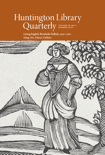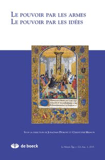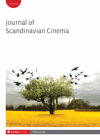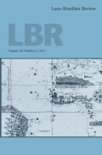
SVMMA-Revista de Cultures Medievals
Scope & Guideline
Promoting Open Access to Medieval Studies
Introduction
Aims and Scopes
- Historical Analysis of Medieval Societies:
The journal explores the socio-political and economic structures of medieval societies, examining topics such as urban history, monasticism, and the role of various institutions. - Cultural and Literary Studies:
SVMMA emphasizes the literary production of the medieval period, analyzing texts from various genres and regions, including autobiographical literature, poetry, and philosophical writings. - Artistic and Architectural Contributions:
The journal investigates the artistic expressions of the medieval era, including painting, sculpture, and architecture, with a focus on their cultural significance and historical contexts. - Religious Practices and Their Impact:
Studies in the journal often delve into the religious dimensions of medieval life, including monastic practices, the influence of Christianity and Islam, and the dynamics of religious conflict and coexistence. - Interdisciplinary Approaches:
SVMMA promotes interdisciplinary methodologies, drawing from history, archaeology, literary studies, and art history to provide comprehensive insights into medieval cultures.
Trending and Emerging
- Intercultural Relations and Exchanges:
There is a growing emphasis on the interactions between different cultures during the medieval period, particularly in the context of the Iberian Peninsula, highlighting themes of coexistence, conflict, and cultural exchange. - Gender Studies in Medieval Contexts:
Recent publications have increasingly focused on gender dynamics, exploring the roles and representations of women in medieval society, literature, and art, which reflects a broader trend in academia towards inclusive historical narratives. - Counterfactual and Alternative Histories:
The journal has begun to explore counterfactual thinking and alternative histories within medieval literature, encouraging innovative interpretations of historical narratives and their implications. - Environmental and Spatial Studies:
Emerging themes include the study of landscapes and environmental factors in medieval societies, illustrating how geography influenced social and political structures, as well as cultural practices. - Philosophical and Theological Discourses:
There is a renewed interest in the philosophical and theological debates of the medieval period, particularly in relation to prominent figures like Averroes and Augustine, suggesting a trend towards deeper intellectual analysis.
Declining or Waning
- Focus on Traditional Monastic Studies:
Although monasticism remains a key theme, the frequency of papers specifically centered on traditional monastic studies, such as monastic rules and daily life, has decreased, possibly in favor of more interdisciplinary approaches. - Narrow Historical Geographies:
There seems to be a waning emphasis on highly localized historical studies, such as those focusing exclusively on specific towns or regions without broader contextual analysis, indicating a shift towards more global or comparative perspectives. - Static Interpretations of Iconography:
The analysis of medieval iconography appears less frequently, suggesting a possible decline in interest in static interpretations of symbols and images, as researchers may be moving towards more dynamic and contextually rich analyses.
Similar Journals

HUNTINGTON LIBRARY QUARTERLY
Fostering Innovative Discourse in History and the ArtsThe Huntington Library Quarterly, published by University of Pennsylvania Press, is a distinguished academic journal that has been enriching the fields of History, Literature, and Visual Arts since its inception in 1964. With an ISSN of 0018-7895 and E-ISSN 1544-399X, this journal operates from the cultural and scholarly hub of the United States, specifically from Philadelphia, PA. Although unlisted as an Open Access journal, it maintains a robust academic presence with its Q3 ranking in key categories such as History, Literature and Literary Theory, and Visual Arts and Performing Arts for the year 2023. The journal curates a range of scholarly articles that explore the rich interdisciplinary connections among these fields, making it an invaluable resource for researchers, professionals, and students alike who seek to deepen their understanding of cultural and historical contexts. With a strong Scopus ranking, situated within the 52nd to 69th percentiles across its related categories, The Huntington Library Quarterly continuously aims to challenge conventions and inspire innovative discourse in the humanities.

MOYEN AGE
Exploring the Depths of Medieval ThoughtMOYEN AGE is a distinguished academic journal published by LE MOYEN AGE BOECK & LARCIER S A in Belgium, focused on the multifaceted disciplines of History, Linguistics, and Literature. With its ISSN 0027-2841 and E-ISSN 1782-1436, this journal serves as a platform for researchers, professionals, and students alike to engage with scholarly articles that contribute to the understanding of medieval studies. Although currently categorized in the fourth quartile across various fields as of 2023, MOYEN AGE demonstrates a commitment to fostering academic dialogue and exploration around historical linguistics and literary theory. The journal is available via subscription, making it an essential resource for those looking to deepen their knowledge in its scope, which spans from 2001 through 2024. As it continues to evolve, MOYEN AGE remains a relevant source for emerging thinkers and established scholars drawn to the complexities of the medieval era.

Acta Baltico-Slavica
Engaging with Cutting-Edge Research in Slavic StudiesActa Baltico-Slavica, an esteemed academic journal published by the Polish Academy of Sciences, Institute of Slavic Studies, serves as a vital platform for the exploration of Slavic cultures, languages, and historical narratives. Since its transition to Open Access in 2014, the journal has fostered inclusivity and accessibility, allowing researchers, professionals, and students to engage with cutting-edge scholarship in the fields of History, Linguistics and Language, and Literature and Literary Theory. With a commendable impact as indicated by its category quartile rankings (Q2 in History and Literature, Q3 in Linguistics), and Scopus rankings reflecting its significance within the academic community, Acta Baltico-Slavica not only contributes to the rich tapestry of scholarship surrounding the Baltic and Slavic regions but also encourages interdisciplinary dialogue. The journal’s commitment to advancing knowledge across its fields of study makes it a prominent destination for scholarly discourse and research inquiry.

Mediterranean Archaeology & Archaeometry
Advancing Knowledge in Archaeology and ConservationMediterranean Archaeology & Archaeometry is a premier academic journal dedicated to advancing the fields of archaeology, anthropology, conservation, and history, published by UK Zhende Publishing Ltd. With its ISSN 1108-9628 and E-ISSN 2241-8121, this journal serves as a vital platform for scholars and practitioners to disseminate innovative research and findings related to the rich archaeological heritage of the Mediterranean region. It has gained remarkable recognition, achieving a Q2 ranking in anthropology and archaeology, and a Q1 classification in several categories including arts and humanities, conservation, and history as of 2023. Its impressive Scopus rankings underscore its impact, with a significant position in history (59/1760) and conservation (11/103) disciplines. Spanning years from 2008 to 2022, the journal invites open access contributions to foster collaboration and interdisciplinary dialogue among researchers, students, and professionals alike, making it an indispensable resource for those engaged in the exploration and preservation of historical narratives within the Mediterranean context.

Journal of Scandinavian Cinema
Celebrating the Rich Tapestry of Scandinavian CinemaThe Journal of Scandinavian Cinema, established in 2014 and published by INTELLECT LTD, serves as a premier platform dedicated to the interdisciplinary field of film studies with a specific focus on Scandinavian cinema. With an impressive Q2 category ranking in Visual Arts and Performing Arts for 2023, and a Scopus rank placing it in the top 62nd percentile of its category, this journal is instrumental in advancing scholarly dialogue within the arts community. The journal strives to explore and critique cinematic expressions from the Nordic countries, contributing to a nuanced understanding of cultural narratives and filmic innovations. Committed to fostering accessibility and engagement, it caters to a diverse audience including researchers, professionals, and students keen to delve into the artistic, cultural, and political dimensions of cinema. The Journal of Scandinavian Cinema is essential for anyone interested in the evolution and impact of film in the Scandinavian context, promising rich insights and a robust collection of scholarly articles.

Luso-Brazilian Review
Navigating the Intricacies of Lusophone History and CultureLuso-Brazilian Review is a premier academic journal published by University of Wisconsin Press, dedicated to advancing the study of Lusophone cultures, literature, history, and socio-political contexts. With an ISSN of 0024-7413 and E-ISSN 1548-9957, this journal serves as a vital resource for scholars who seek to explore the rich and diverse connections between Portugal and Brazil. It holds notable distinction with a Q1 ranking in Literature and Literary Theory and consistently performs well in Cultural Studies and History, making it an essential publication for both researchers and enthusiasts in these fields. Although not open access, the journal offers a wealth of peer-reviewed articles that probe into intricate themes impacting Lusophone literature and cultural studies from 1978 to 2024, ensuring that readers remain at the forefront of ongoing scholarly conversation. Housed in the heart of the United States at Madison, WI, Luso-Brazilian Review continues to cultivate an academic dialogue that is relevant, timely, and invaluable for professionals, students, and anyone interested in the cultural interplay between Lusophone nations.

Revista Chilena de Estudios Medievales
Advancing Knowledge in the Heart of Medieval CultureRevista Chilena de Estudios Medievales, published by Universidad Gabriela Mistral, is a premier open access journal that has been serving the field of medieval studies since 2012. With its unique ISSN 0719-2215 and E-ISSN 0719-689X, this journal provides a vital platform for scholars, researchers, and students interested in the rich tapestry of medieval history, literature, and culture. Located in Santiago, Chile, at Ladislao Errazuriz 2073, Providencia, Santiago 00000, the journal aims to foster a deeper understanding of the medieval period through interdisciplinary research and insightful articles. While impact factors and HIndex data are currently unavailable, the journal is dedicated to maintaining high academic standards and promoting knowledge dissemination in the field. Its open access model ensures that research is freely available to the global community, thereby enhancing engagement and collaboration among medieval studies scholars. Join us in exploring the depths of the medieval world through Revista Chilena de Estudios Medievales.

Journal of Persianate Studies
Bridging Disciplines through Persianate PerspectivesJournal of Persianate Studies, an esteemed publication by BRILL, serves as a vital platform for interdisciplinary research focusing on the rich cultural, historical, and societal dimensions of Persianate societies. Since its inception in 2008, this journal has been pivotal in advancing scholarship within its scope, contributing significantly to the fields of Cultural Studies, History, Sociology, and Political Science. With an impactful tier placement in the 2023 Category Quartiles—Q3 in Cultural Studies, Q2 in History, and Q4 in Sociology and Political Science—it hosts a diverse array of peer-reviewed articles that engage scholars and practitioners alike. The journal has achieved commendable rankings in Scopus, positioning itself within the top 25% for History and top 35% for Social Sciences. While it operates under a traditional access model, its commitment to disseminating critical scholarly work remains unwavering, making it an essential read for researchers and students dedicated to exploring the intricacies of Persianate influences in contemporary contexts.

Ancient Civilizations from Scythia to Siberia
Exploring the Rich Tapestry of Ancient CivilizationsAncient Civilizations from Scythia to Siberia, published by BRILL, is a pivotal journal dedicated to the exploration and scholarly analysis of ancient cultures in Eurasia, with a focus spanning from the Scythian tribes to the Siberian territories. With an ISSN of 0929-077X and an E-ISSN of 1570-0577, this journal plays a significant role in the fields of Archeology, Classics, and History, holding esteemed rankings in Q3 and Q1 categories, thus affirming its status in the academic community. Covering a wide temporal range from 1995 to 2024, the journal aims to provide a comprehensive platform for researchers and students to disseminate their findings and foster collaborative discourse. With impact rankings in the 86th and 75th percentiles for Classics and History, respectively, it is recognized for its high-quality contributions that advance knowledge in these areas. Although currently not an open-access journal, it offers various options for accessing its rich content. By bridging gaps in historical understanding and engaging with the complexities of ancient societies, Ancient Civilizations from Scythia to Siberia remains an essential resource for those passionate about uncovering the narratives of our past.

Journal of Islamic Manuscripts
Documenting the Past, Inspiring the FutureJournal of Islamic Manuscripts is a prestigious academic journal published by BRILL, dedicated to the study and preservation of Islamic manuscripts from their historical, cultural, and artistic perspectives. With an ISSN of 1878-4631 and an E-ISSN of 1878-464X, this journal serves as a vital platform for researchers, professionals, and students interested in Cultural Studies, Visual Arts, and Performing Arts. Housed in the Netherlands, the journal boasts a commendable rank within Scopus, showcasing its significant impact within its fields—ranking #229 in Visual Arts and Performing Arts and #690 in Cultural Studies for 2023. Operating under a traditional subscription model, the journal ensures its contributions are accessible to a global audience dedicated to furthering the understanding of Islamic art and heritage. Spanning from its inception in 2010 through 2024, the journal promises to continue enhancing knowledge and appreciation of the diverse narratives encapsulated in Islamic manuscripts.